Immediately after it was purchased the SB10K lathe had been using a 115V single phase motor which is not usable with a VFD so a different motor (3 phase) was required. This article goes over what specifications were desired in a replacement motor and what motor was eventually installed. For the VFD, various features and models are discussed and then I elaborate on why I went with the VFD that was eventually installed in the lathe.
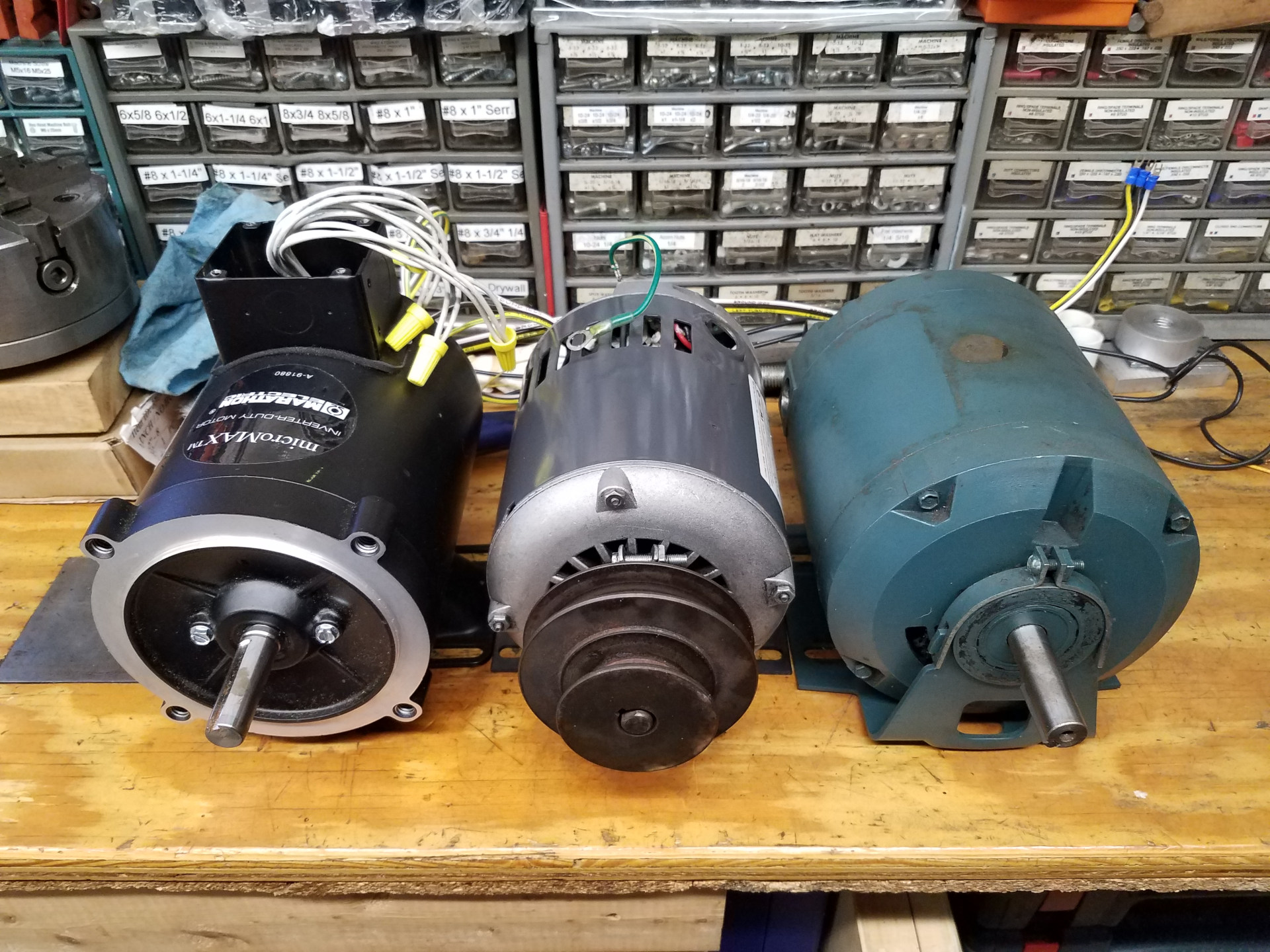
A line-up of three motors that will fit in this lathe. The motor in the middle with the belt pulley is the single phase 115V motor that will be replaced. It's a 1/2 HP 1725 RPM motor in a 56Z frame.
Eventually I got reverse working with this motor and it powered the lathe for several years. The main problem I found while using this motor is that it's an open design (drip proof) which allows oil to enter the motor casing. Since this lathe uses a total loss lubrication system and the motor is at one of the lowest parts of the lathe it will eventually get covered in oil. On several occasions, especially during cold weather, the motor would "stick" on start and if it wasn't shut down immediately and cleaned the start windings would have burnt-up ruining the motor. For this reason, the next motor installed in this lathe will definitely be fully enclosed.
The motor on the right was the 230V 3-phase motor that came with the lathe, presumably the original motor. It's totally enclosed and seemed to be in fine shape for being 50 years old. There's talk floating around the internet that the armature windings in some older electric motors sometimes don't last long when used with some VFD's, but since I'm not pushing the motor to the extreme edges of the RPM envelope it probably would have been fine to use.
The black motor on the left is the one I eventually installed. It's a NOS TENV (Totally Enclosed Non-Ventilated) inverter rated 1/2 HP 230V 3-Phase motor that was delivered to my door for $80. That was a deal I simply couldn't pass up!
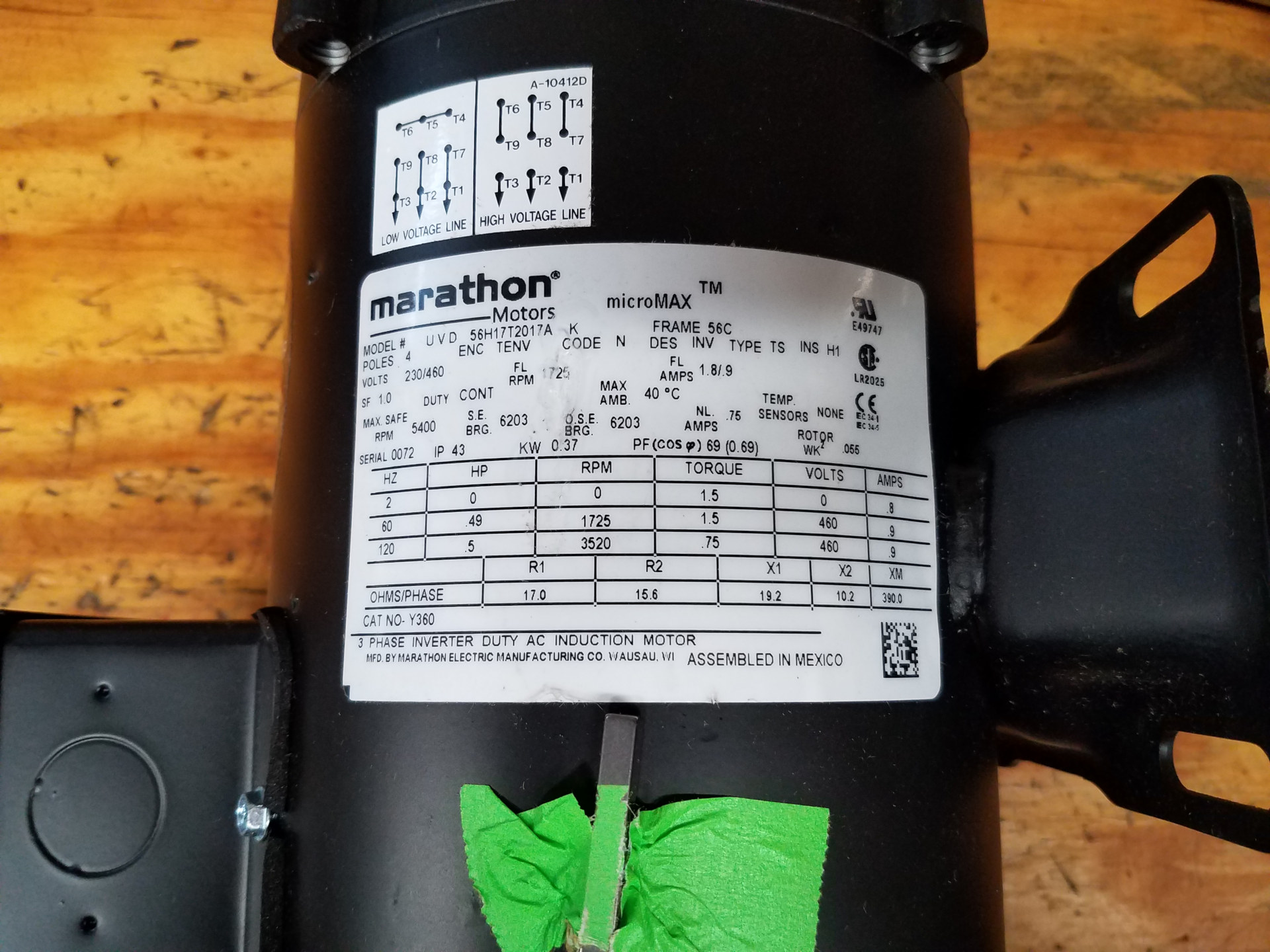
This VFD rated industrial motor will easily provide a lifetime of reliable service powering this lathe. With the replacement motor sorted out, it was time to pick a VFD to power it.
First off, since this is only a 1/2 HP motor it's more convenient to power it from a regular 115V outlet so I needed a VFD that will take single phase 115V and output 230V 3-phase power.

Above is what your typical imported VFD looks like. For this installation, there are two things I don't like about them: The first issue, they are fan cooled, so when powering the motor the VFD cooling fan is running. That's not so bad, but with some models the fan is running all the time and that is annoying. Second issue is the big problem in that the VFD enclosure is only rated for a IP20 protection class. That is, the intrusion protection rating for the VFD enclosure will keep fingers out but offer zero protection against water, oil, dust or metal chips. Although I've seen plenty of pictures of these VFD's directly attached as-is to machinery, personally I don't think it's a good idea. Metal working equipment should be using sealed motors and controllers.
One way to make this type of VFD more water tight is by installing it in a cabinet, with filtered, active air cooling and a separate remote control pad. While this is possible, it takes a fair bit of room for the cabinet and it's certainly a bother. Clough42 has a good series on such an installation:
The trouble with this setup is that I wanted all the VFD hardware attached directly to the lathe cabinet. With no electrical equipment attached to the wall the lathe is more compact and easier to move. So I kept shopping and eventually went with this VFD.
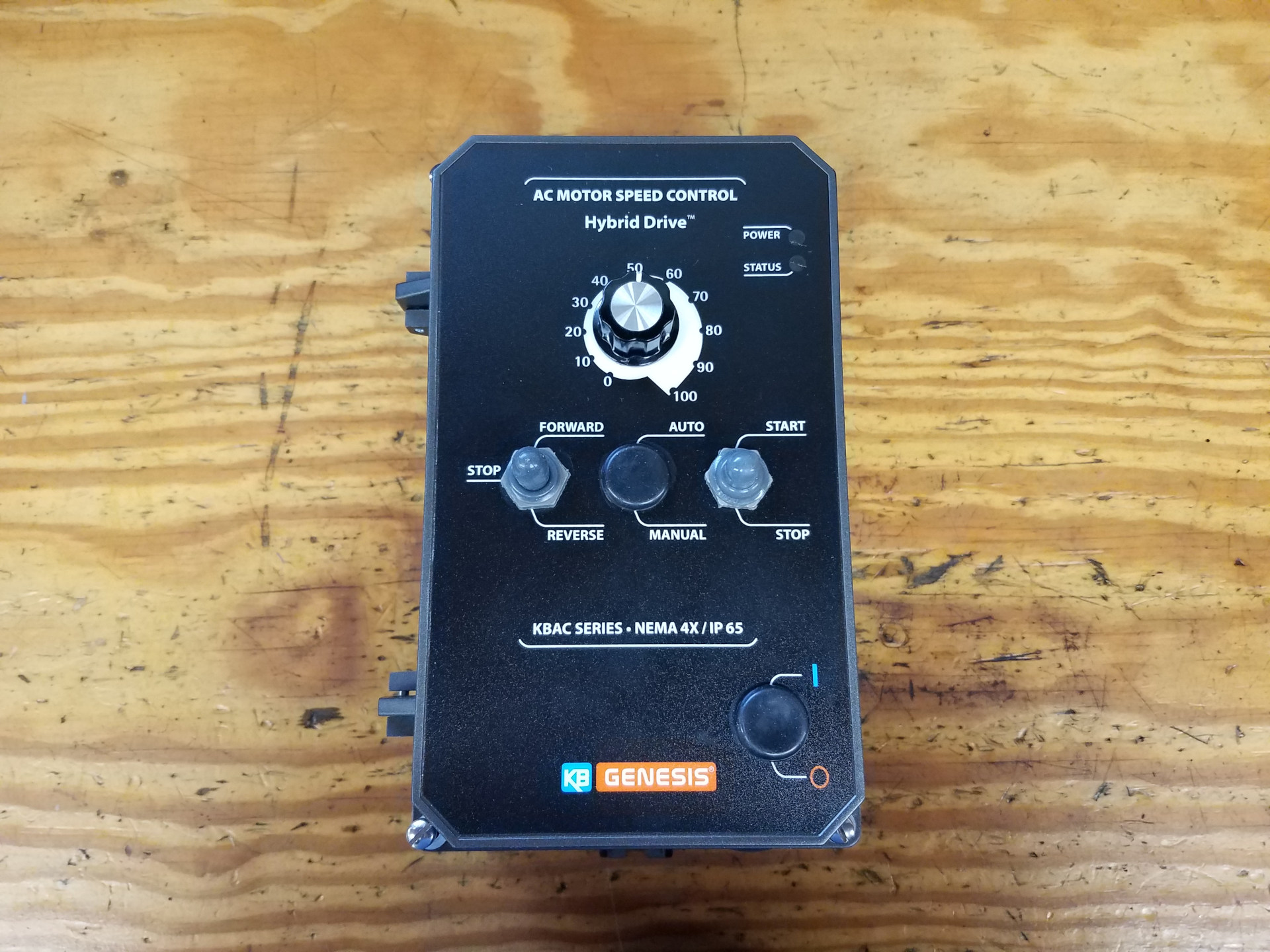
https://acim.nidec.com/drives/kbelectronics/products/ac-drives/ac-drives-nema-4
It's a 1HP, passive cooled VFD contained in a IP65 (liquid tight) case. All the controls are factory installed in the front panel: a speed knob, a 3 position forward-stop-reverse switch and a 3 position start(spring loaded)-run-stop switch. The VFD power on-off switch position at the bottom of the panel was left unfilled as I'm using a separate mushroom head emergency stop button for this function.
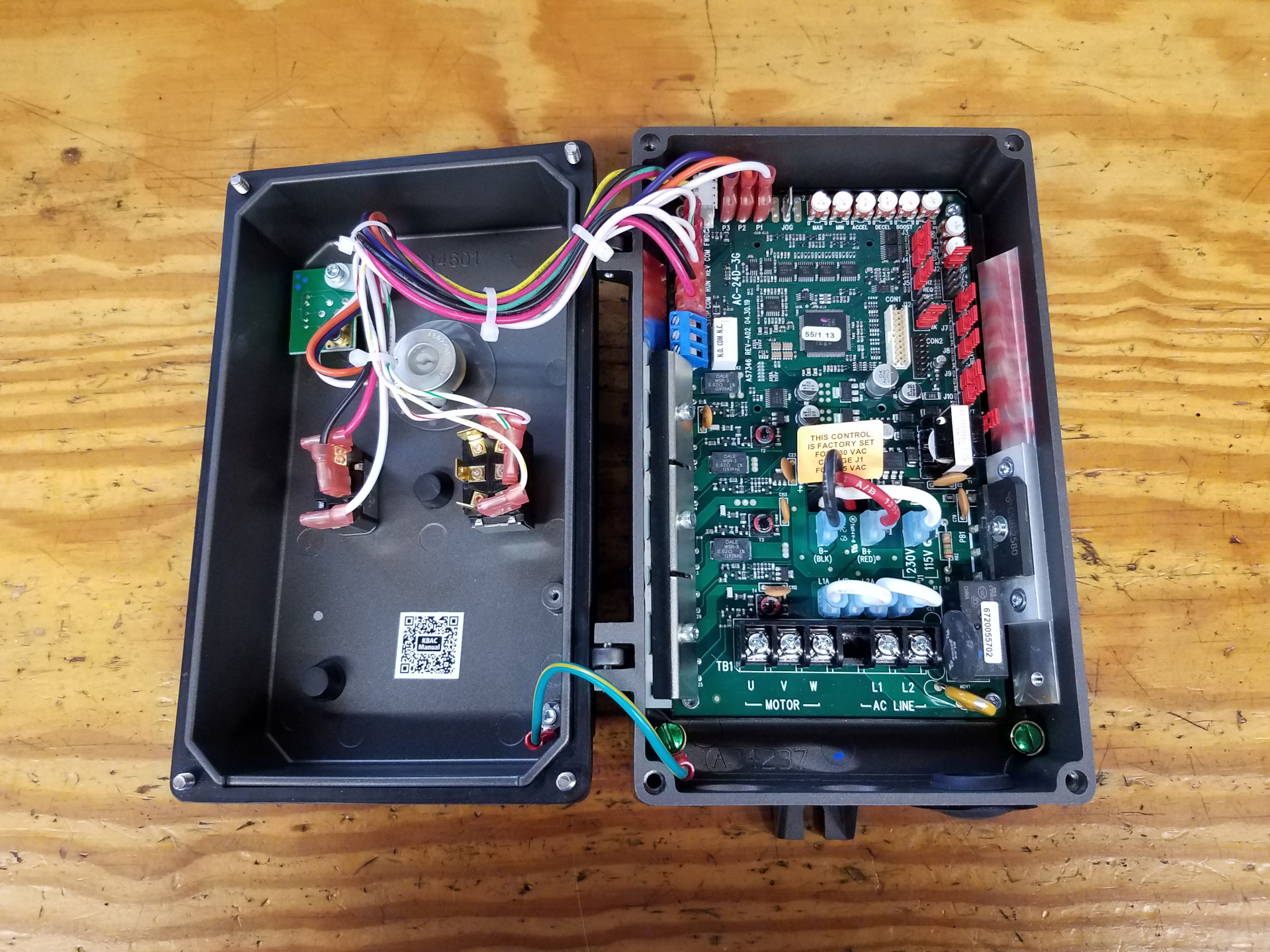
One of the neat features of this VFD is that all the settings are done with trim pots and jumpers, no obscure digital menu selections and keypad entering. Because of this, it's extremely easy to install and configure. I'm not afraid of the more elaborate digital VFD's like the one installed in the mill, but this one has enough features to do everything I need to run the lathe.
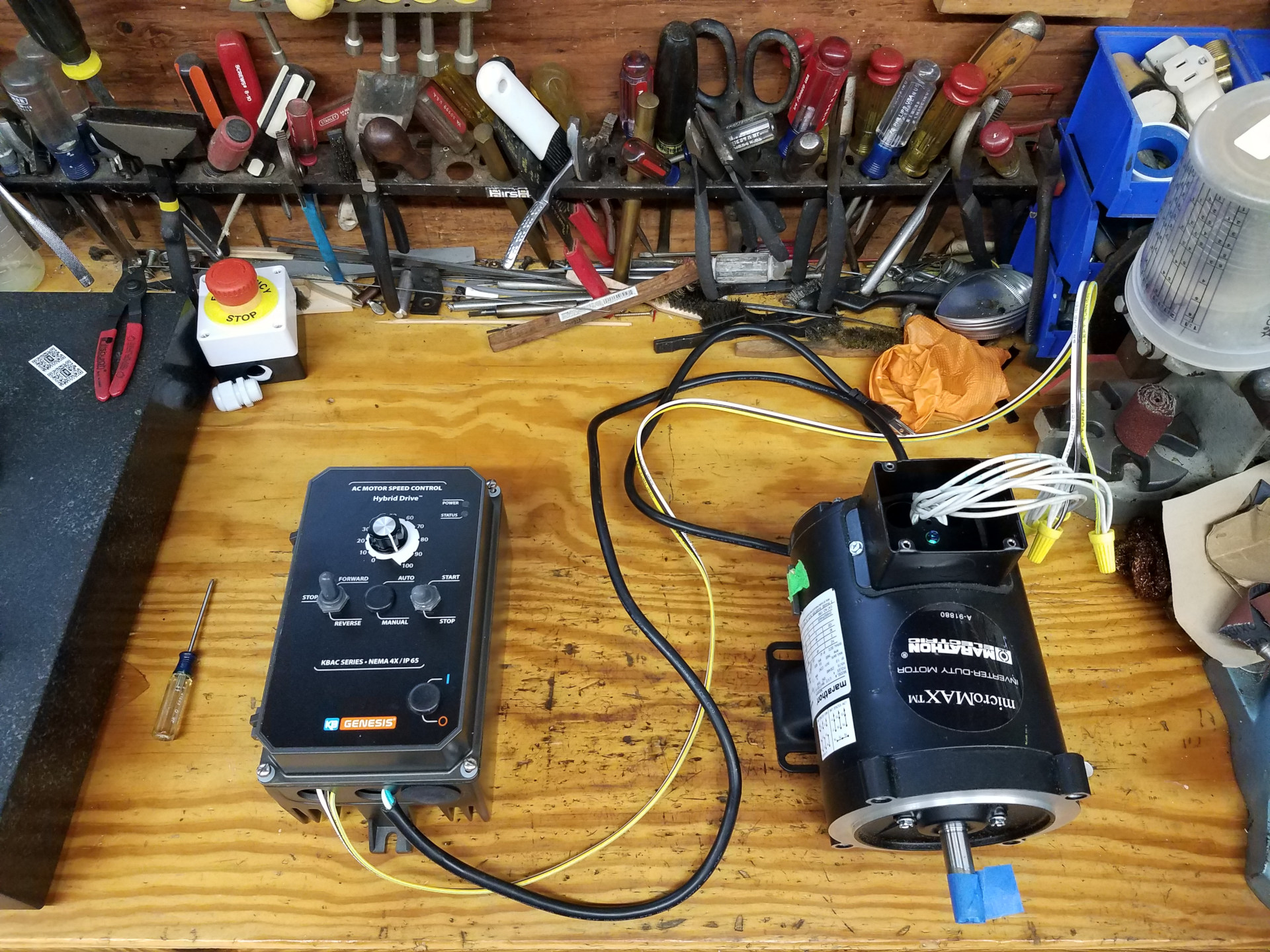
Here the VFD and motor are on the workbench for bench testing. Everything worked great the first time! These 3-phase motors do run much more smoothly than single-phase motors. I can tell you that as I write this article this VFD and motor combination have been running completely flawlessly in the lathe for over two years now.
Next article will complete the series with motor and VFD installation into the lathe cabinet.